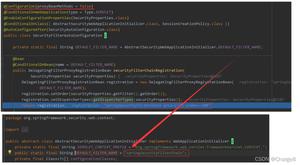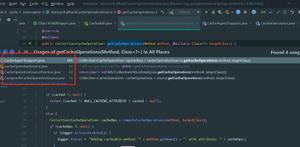spring框架(3)— spring集合类的注入
本文内容纲要:spring框架(3)— spring集合类的注入
1.Car.java
package com.eniac.beans;public class Car {
private String type;
private String factory;
private double price;
public Car(){
}
public Car(String type, String factory, double price) {
super();
this.type = type;
this.factory = factory;
this.price = price;
}
public String getType() {
return type;
}
public void setType(String type) {
this.type = type;
}
public String getFactory() {
return factory;
}
public void setFactory(String factory) {
this.factory = factory;
}
public double getPrice() {
return price;
}
public void setPrice(double price) {
this.price = price;
}
@Override
public String toString() {
return "Car [type=" + type + ", factory=" + factory + ", price="
+ price + "]";
}
}
2.Person.java
package com.eniac.beans;import java.util.List;
import java.util.Map;
public class Person
{
private String name;
private int age;
private List<Car> cars;
private List<String> names;
private Map<String, Car> maps;
public String getName() {
return name;
}
public void setName(String name) {
this.name = name;
}
public int getAge() {
return age;
}
public void setAge(int age) {
this.age = age;
}
public List<Car> getCars() {
return cars;
}
public void setCars(List<Car> cars) {
this.cars = cars;
}
public List<String> getNames() {
return names;
}
public void setNames(List<String> names) {
this.names = names;
}
public Map<String, Car> getMaps() {
return maps;
}
public void setMaps(Map<String, Car> maps) {
this.maps = maps;
}
@Override
public String toString() {
return "Person [name=" + name + ", age=" + age + ", cars=" + cars
+ ", names=" + names + ", maps=" + maps + "]";
}
}
3.bean.xml
<?xml version="1.0" encoding="UTF-8"?><beans xmlns="http://www.springframework.org/schema/beans"
xmlns:xsi="http://www.w3.org/2001/XMLSchema-instance"
xmlns:util="http://www.springframework.org/schema/util"
xmlns:p="http://www.springframework.org/schema/p"
xsi:schemaLocation="http://www.springframework.org/schema/beans http://www.springframework.org/schema/beans/spring-beans.xsd
http://www.springframework.org/schema/util http://www.springframework.org/schema/util/spring-util-4.0.xsd">
<bean id="person1" class="com.eniac.beans.Person">
<property name="name" value="科比"/>
<property name="age" value="24"/>
<property name="cars">
<list>
<bean id="car1" class="com.eniac.beans.Car" p:type="BMW" p:factory="长安" p:price="4000"></bean>
<bean id="car2" class="com.eniac.beans.Car">
<property name="type" value="Benz"></property>
<property name="factory" value="一汽"></property>
<property name="price" value="300000"></property>
</bean>
</list>
</property>
<property name="names">
<list>
<value>aaa</value>
<value>bbb</value>
</list>
</property>
<property name="maps">
<map>
<entry key="car1" value-ref="car1"/>
<entry key="car2" value-ref="car2"/>
</map>
</property>
</bean>
</beans>
1.使用了p命名空间;
2.通过使用子标签,将list的值注入;
3.使用
本文内容总结:spring框架(3)— spring集合类的注入
原文链接:https://www.cnblogs.com/Mr24/p/6930719.html
以上是 spring框架(3)— spring集合类的注入 的全部内容, 来源链接: utcz.com/z/296043.html









